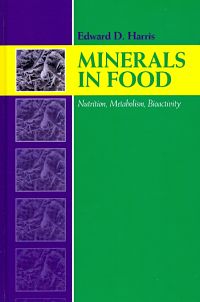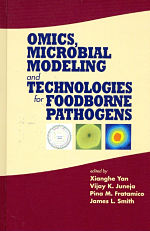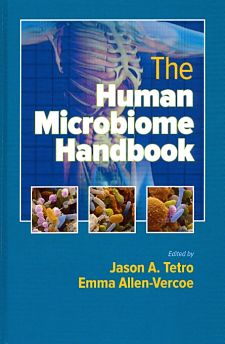- Fundamental examination of the functions of food minerals in humans
- Investigates chemistry, biological effects and nutrition
- Covers macrominerals and microminerals from arsenic and boron through vanadium and zinc
This book forms a technical introduction to all major and trace minerals in foods, including their chemistry, transport, absorption, bioavailability and physiological roles. The book explains the in vivo functions of food minerals and demonstrates why and how macrominerals and microminerals are necessary for proper metabolic functioning in humans. Also presented is the etiology of diseases resulting from mineral deficiencies. Important information is developed on the roles of minerals in the brain, as well as ways minerals interact with one another in the body. Detailed biochemistry and nutritive information for each of twenty minerals are provided in separate chapters. This text represents the only comprehensive summary of the science of inorganic elements in foods and their biological effects, with implications for food scientists, food engineers and clinical nutritionists.
From the Author’s Preface
“The present book assembles and connects (such) insights into a cohesive description of the multiple functions of dietary minerals in animals and humans. The book should help readers grasp why twenty chemical elements, over one sixth of the periodic table, are biologically necessary. However, this understanding is only the beginning, as this volume contains a comprehensive description of minerals as dietary nutrients. The reader will see the scope of in vivo reactions carried out or catalyzed by minerals, the ways the status of minerals are assessed, the consequences of dietary mineral deficiencies or excesses, and the unique differences between macrominerals and microminerals in all of these phenomena…. The layout of the text follows a pattern, beginning first with principles that apply to all minerals, which is followed by an in-depth explanation of specific examples. Since minerals have unique roles in the brain, an entire chapter is devoted to mineral chemistry and the brain. Similarly, a chapter is devoted to mineral-mineral interactions, given that no single element acts in isolation. The focus however remains on the chemistry, biochemistry and nutritional properties with the goal being to illustrate the necessity of minerals in physiological functioning…. A discussion of microminerals demonstrates why this class of minerals is akin to vitamins in terms of their quantity in the diet and their ultimate purpose in the biological system.”






There are no reviews yet.